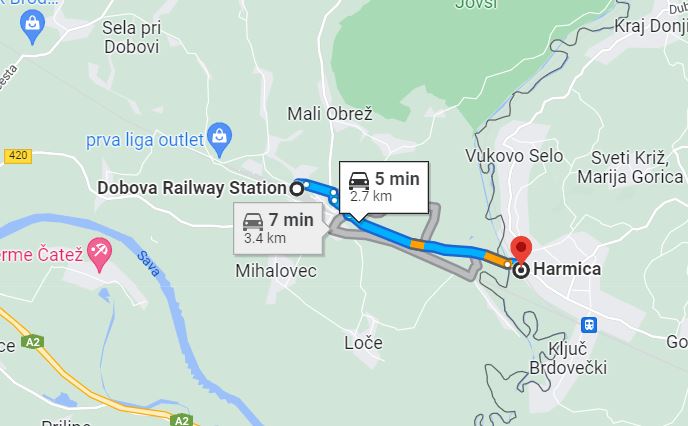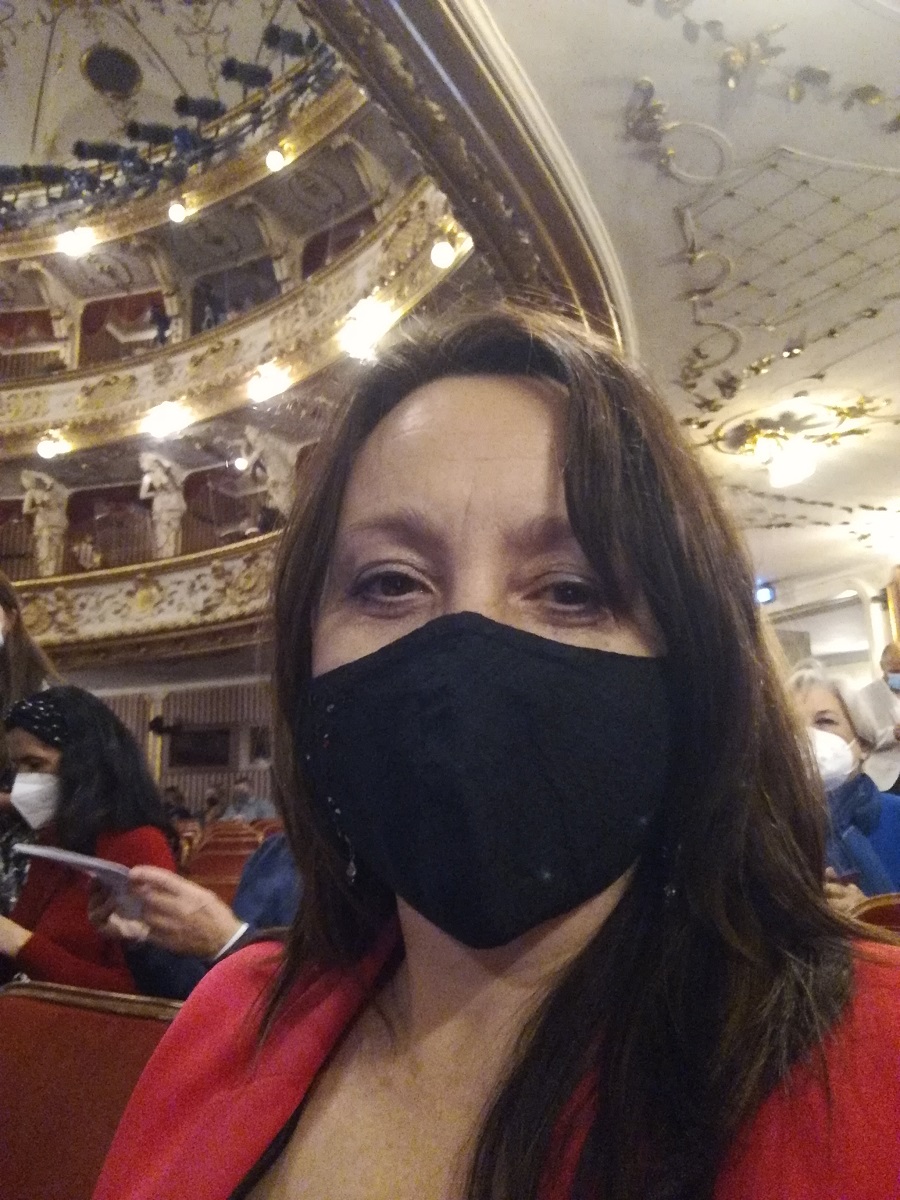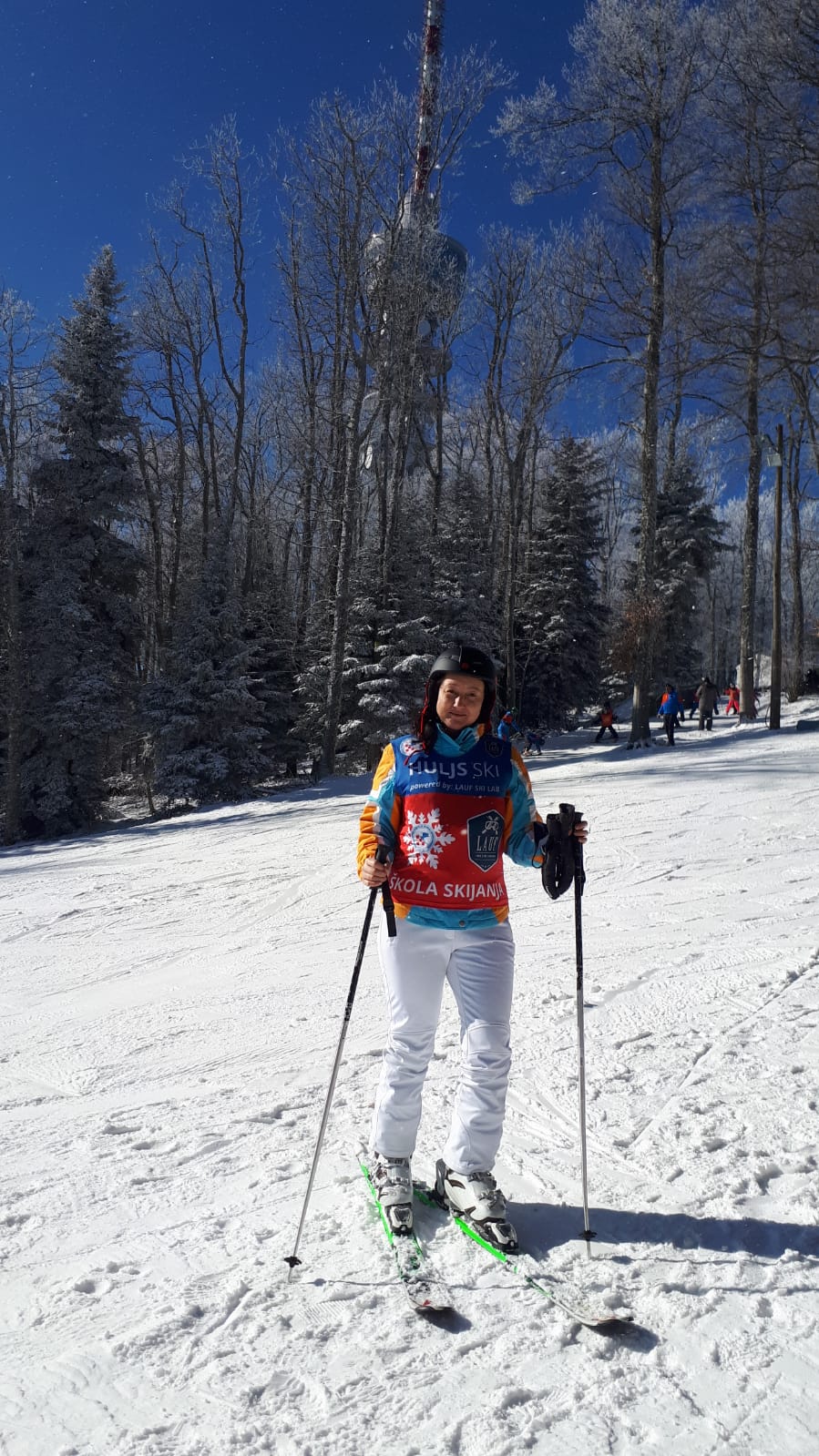Three Fires in Dalmatia: Two in Šibenik-Knin County, One in Zadar County
July 13, 2022 - Three fires in Dalmatia broke out on Wednesday - two in Šibenik-Knin County and one in Zadar County. The current situation is not good.
This article has been updated. Click here for the latest update of the fire in Sibenik at 20:45 pm.
Three fires are active in Dalmatia, one in Zadar County and two in Šibenik-Knin County, the Croatian Fire Brigade Association (HVZ) announced on Wednesday, reports Jutarnji List and HRT.
"We once again appeal to the citizens to be extra careful due to the extremely unfavorable weather conditions, which include a very high risk of forest fires breaking out in almost the entire area of Croatia," said chief fire commander Slavko Tucaković.
In the village of Boraja near Šibenik, a fire broke out due to a traffic accident, after which the surrounding vegetation caught fire. A Canadair was sent to extinguish the fire, with the help of the fire brigade on land.
In the same county, there is also an active fire on Benkovačka cesta, which is also being extinguished by firefighters.
Vodice JVP commander Antonio Begić told Dalmacija Danas that the fire on Benkovačka cesta is quite large, that 45 firefighters are putting it out, and that the number of firefighters is growing.
"The Air Force is helping us, specifically two Canadairs. There is a pine forest above, low vegetation, there are also endangered buildings, so we are now concentrating on that," added Begić. Begić said that the firefighters do not yet have control over the fire.
A traffic accident also caused a fire in Zadar County, in the area of Visočane. A van was ignited which caused the fire to spread to grass and low vegetation.
Firefighters point out that there is no danger of the fire spreading to the buildings, and firefighters and Canadairs have already been sent to the scene.
HVZ reminds citizens that it is forbidden to burn weeds, especially in windy weather, to use barbecues in nature, and to throw cigarette butts and any other irresponsible behavior that may cause a fire.
For more news in Croatia, follow TCN's dedicated page.
Travel + Leisure's 20 Best Islands in Europe: Hvar and Dalmatian Islands #9
July 13, 2022 - Travel + Leisure readers choose the best islands in Europe based on fabulous food, rich history, and beautiful surroundings. Hvar and the Dalmatian Islands take #9!
Travelers are once again exploring the world with gusto, and, as always, our intrepid readers have led the way. For this edition of our annual survey, hundreds of thousands of you reflected on recent journeys and shared your thoughts on hotels, islands, outfitters, national parks, and much more. Cheers to the best readers—and finest travel experiences—on the planet! - Travel + Leisure.
The World's Best Awards survey is back, where Travel + Leisure readers rank the best travel experiences worldwide, from top cities, islands, cruise ships, spas, and airlines to hotels, resorts, and more.
And in the World's Best Awards, the best islands in Europe were chosen by readers based on their activities and sights, natural attractions and beaches, food, friendliness, and overall value.
Ischia Island in Italy, just off the coast of Naples, took the cake this year as the #1 island in Europe. The volcanic island in the Tyrrhenian Sea was praised for its quaint towns, natural hot springs, and standout hotels, including the 128-room grande dame Regina Isabella and the 73-room San Montano Resort & Spa.
And while islands in Greece, Portugal, Spain, and France helped make up the top 10, it wouldn't be the 'best islands in Europe' list without mentioning Hvar and Dalmatia.
Namely, Hvar and the Dalmatian Islands came in at #9 this year, receiving an impressive 87.60 rating by readers!
But are we really surprised?
Hvar is a haven in the summer where glitz and glamour meet authentic experiences. The star-studded harbor is often decked out with luxury yachts, complemented by a series of standout hotels and restaurants from the Sunčani Hvar hotel group and, notably, the best nightlife on the coast.
Hvar and Dalmatia have been increasingly voted as go-to destinations in Europe over the years, and you may remember that Hvar was voted the #1 island in Europe in the Condé Nast Readers’ Choice Awards last year!
You can find the complete list of Travel + Leisure's 20 best islands in Europe here.
For more on travel in Croatia, follow TCN's dedicated page.
Croatia Issues Two Bonds Worth €1.2bn in Total
ZAGREB, 13 July (Hina) - Croatia has issued two bonds, worth a total of €1.2 billion, on the domestic capital market to refinance a bond maturing in the second half of July.
The first bond, in the nominal amount of €400 million, falls due in 2026 and has a yield of 2.17%, while the second one, in the nominal amount of €800 million, matures in 2032 and has a yield of 3.47%, the Ministry of Finance announced in a statement on its website on Wednesday.
The proceeds will largely be used to refinance a €1 billion bond that falls due on 22 July and to finance the needs of the state budget. The Ministry noted that compared with the refinancing amount, nearly €36 million will be saved in interest annually.
By choosing the mid-and long-term maturity, the Ministry achieved the optimum level of demand on the domestic capital market, covering a wide range of institutional investors, including banks, mandatory and voluntary pension funds, insurance and investment funds, with more than 50 domestic institutional investors participating, the statement said.
Investors' interest exceeded €1.75 billion.
The Ministry said that the latest issue reaffirmed Croatia as an attractive issuer on the domestic capital market.
The issue was arranged by Erste & Steiermärkische Bank, OTP Bank, Privredna Banka Zagreb, Raiffeisenbank Austria and Zagrebačka Banka and co-arranged by Hrvatska Poštanska Banka.
For more, check out our politics section.
Government Supports Proposal to Amend Constitutional Provisions on Referenda
ZAGREB, 13 July 2022 - The Croatian government has recommended that parliament adopt the proposal by 92 lawmakers to amend the provisions of the constitution concerning referenda.
The amended constitution and the adoption of the new Referendum Act, which is also in the pipeline, will fully regulate this area of law, the government said in a statement on Wednesday.
The proposed amendments will facilitate the launch of referendum initiatives by voters while at the same time ensuring the legitimacy of decision making, it added.
The government in particular supported the proposal to reduce the necessary number of voters petitioning for a nationwide referendum from the present 10 per cent of the total electorate, or 360,000 voters, to 250,000 voters.
"The reduction of the number of signatures required for calling a referendum will substantially facilitate the use of a referendum as an instrument of direct democracy," the government said.
It also supported the proposal to ensure the legitimacy of decision making by introducing a decision making quorum, saying that the proposed quorums were appropriate to different cases.
For more, check out our politics section.
Croatia Logs 1,808 New Coronavirus Cases, 6 Deaths
ZAGREB, 13 July 2022 - Croatia has registered 1,808 new coronavirus cases and six deaths in the last 24 hours, the national COVID-19 crisis management team said on Wednesday.
The number of active cases currently stands at 8,752, including 442 hospitalized patients, 14 of whom are on ventilators, and 3,698 persons are self-isolating.
Since 25 February 2020, when the first case was confirmed, 1,162,061 people have been diagnosed with COVID-19, of whom 16,130 have died and 1,137,179 have recovered, including 404 in the last 24 hours.
A total of 59.56% of the total population, or 70.83% of adults, have been vaccinated to date. 2,315,861 people have received at least one vaccine dose, while 2,042,199 have received two.
For everything you need to know about coronavirus specific to Croatia, bookmark our dedicated section and select your preferred language if it isn't English.
Jon Worth EU Cross Border Rail Project Comes to Croatia: Oh Dear!
July 13, 2022 - Croatian railways made be old and underfunded but that is - it seems - only half the story, as TCN learned in a fascinating two hours with leading Green blogger Jon Worth on his fascinating (and slightly geeky) EU Cross Border Rail Project.
One of my favourite things about my 'job' is the random nature of my inbox. Once I sift through the constant abuse from my trolls, there are always a couple of very random and intriguing invitations and leads. Croatia is such a fascinating country and so few people write about it in English that I invariably get selected by default.
Incoming email from a friend, one of my very favourite people in Zagreb a few weeks ago:
hello there
long time no see (or hear), hope to grab a beer at some point in the near future?
to make a long story short: a friend of mine Jon Worth is doing this crazy project of trying to cross every single railway border crossing in europe
here is the project web site: https://crossborderrail.trainsforeurope.eu/
he will be passing through zagreb in early july (only couple of hours will be in zagreb) and I was wondering if wanted to join us for a beer near the railway station
fun fact (actually, not funny at all); slowest stretch of rail travel during his 40 days of trail traveling will be in croatia
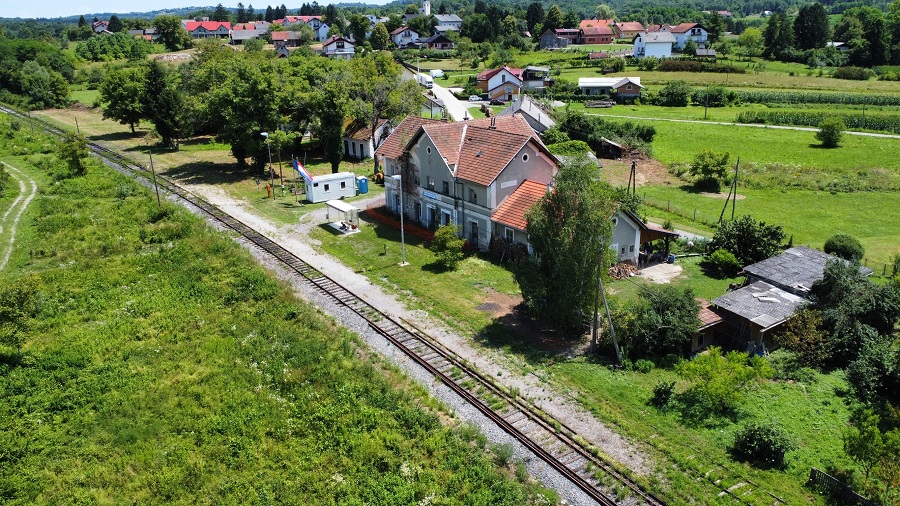
Although train geeks are not really my thing, my Croatian friend has a fine understanding of the art of the absurd, and so I knew there would be more to this than advertised. The promise of free beer sealed it, then I promptly forgot about the whole thing until my friend sent me a reminder a few days ago. Just what was this project, and who was this guy?
It turns out it sounded rather interesting indeed.
A chap with his own Wiki page, this Jon Worth was a political blogger, journalist and editor who regularly writes about EU policy, Brexit and Germany policy. Since 2015 he has been a visiting professor at the College of Europe. His Euroblog ranked the third most influential left-of-center blog in 2010 by Social Europe. And he seemed to be rather passionate about train travel and improving cross-border train travel and developing a digital European rail timetable in particular.
His visit to Croatia was Day 25 of a 40-day, publicly crowdfunded project inspired by an initiative by the Chairman on the Transport Committee of the European Parliament:
Back in 2015, the then chair of the Transport Committee in the European Parliament, Michael Cramer examined 15 so-called “missing links” – places where trains used to cross borders within the European Union, but no longer do.
7 years on I wondered: what has come of those missing cross-border rail links Cramer had proposed to fix when he was a MEP?
So the idea was born to plan a huge rail and bike journey that crosses every internal border inside the European Union (and EFTA countries) that you can cross by train. And en route stop for at least long enough to organise a meeting in the political capital of each country to discuss these issues with local activists,
My instructions from my friend were to meet him on Platform 2 of Zagreb Train Station at 18:27 to await the arriving train from Karlovac, which threw me into some confusion, as I could not work out what border was being crossed or where Worth was coming from.
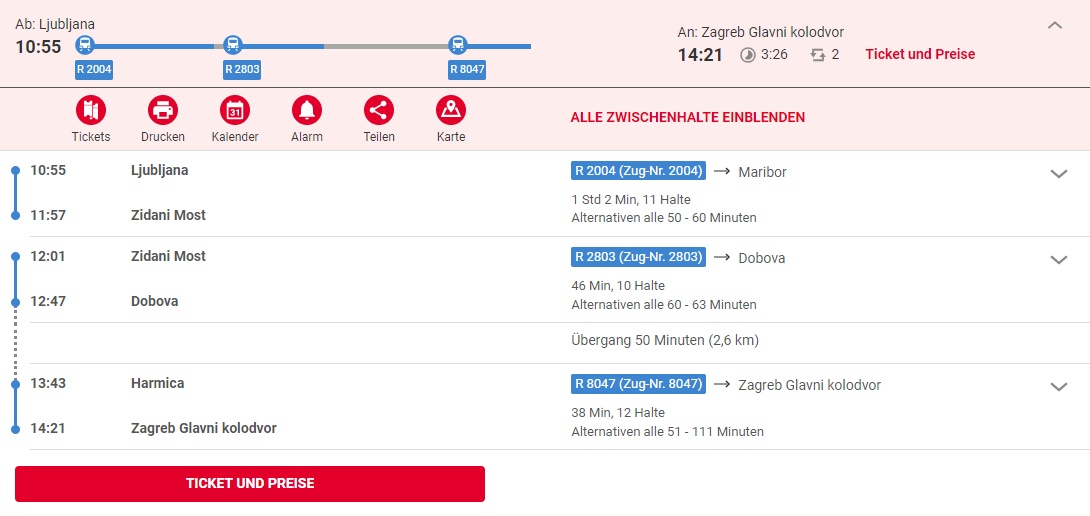
As often happens these days, the day before we were due to meet, the inbox gifted me another gift, this time from a Swiss friend who was planning a train trip from Ljubljana to Zagreb, only to find he would have to WALK 2.7 km between the two countries if he wanted his preferred travel time.
Ljubljana to Zagreb, once an internal connection in the former Yugoslavia, today a journey between two countries, with a Schengen border in between. It is my understanding that this walk is not necessary on the majority of the connections between the two, but it does apparently exist. And things will hopefully improve as the Schengen border moves to the east of Croatia.
And so to Platform 2 of Zagreb Train Station, where my friend greeted me cheerfully with the surprising news that the Croatian train was late. We caught up until, some 30 minutes later, the Karlovac train pulled into Platform 4, and Jon Worth emerged, complete with trusty fold-up bike to fill us in on his adventures so far.

He had started his day in Ljubljana and decided to enter Croatia via Novo Mesto and Metlika towards Karlovac via Bubnjarci, before heading to Zagreb for meetings and dinner and then the overnight train through Slovenia to Munich.
As not all the routes in the project are functional, Worth is also travelling with a foldup bike to cover border crossings, and his day included a 38-kilometre cycle to Karlovac from the border.
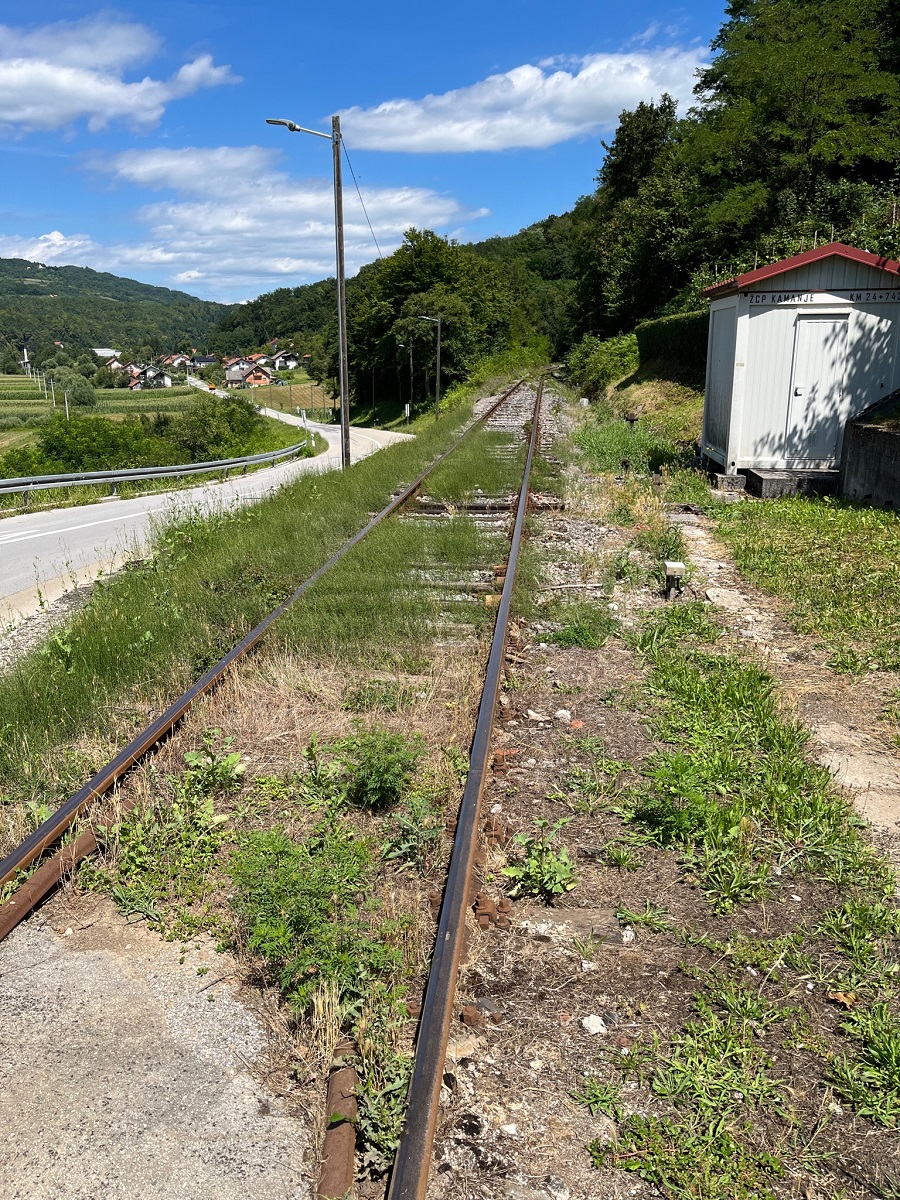
No train has run between Croatia and Slovenia since COVID, as the weeds suggest, and while there is a service part of the year from Bubnarcji during the year, it does not operate in the summer.
Bubnarcji station itself is a sad shadow of its former self, where chickens roam the platforms where once cross-border passengers did.
"In fact, the railway in Bubnjarci is perhaps the worst I've seen so far, covered in oil, and the bridge it crosses is physically blocked by something, I guess to prevent migrants from crossing. That's why I cycled here all the way to Karlovac," said Worth.

Worth knew that he would not be taking the train on the Croatian side due to the timetable, which saved Croatia from an ignominious award of the slowest track on the entire project across each EU border - just 28.23 km/h. Unconfirmed eyewitness accounts claim that Worth cycled to Karlovac quicker. The second slowest was in Romania at 33 km/h.
What really interested me about meeting Worth, however, was not so much the underinvestment in Croatian railways - it is hardly news (and as long as we have pearls like the recently-launched Osijek to Split train service which takes 13 hours - at least officially, the first one was over 80 minutes late), but the total lack of coordination between national railways to improve information and cross-border travel. The raging success of the privately-owned Regiojet trains from Central Europe to Croatia's Adriatic coast has shown that there is huge potential in increasing and developing cross-border rail travel.

But one of the key issues is a very basic one which really should not be an issue in this digital age - lack of information.
One of Worth's aims is to have a digital rail timetable for Europe and a Skyscanner-type website service for buying rail tickets. It seems an achievable goal. I actually thought something like this existed with the www.bahn.de website, but that excellent German resource is actually quite incomplete when it comes to national timetables. A Worth blog earlier this year gives an outstanding example of how Croatia's already terrible rail network is actually portrayed to be even worse than it is - bringing additional frustrations to passengers. The case of the cross-border service from Osijek to Pecs in Hungary illustrates the point perfectly.
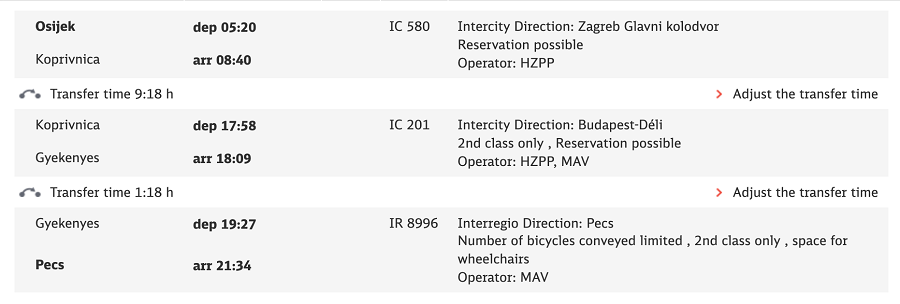
When Worth wrote his blog earlier this year, he found only one train a day between Osijek and Pecs, a distance of 90 km and 1 hour 20 by car.
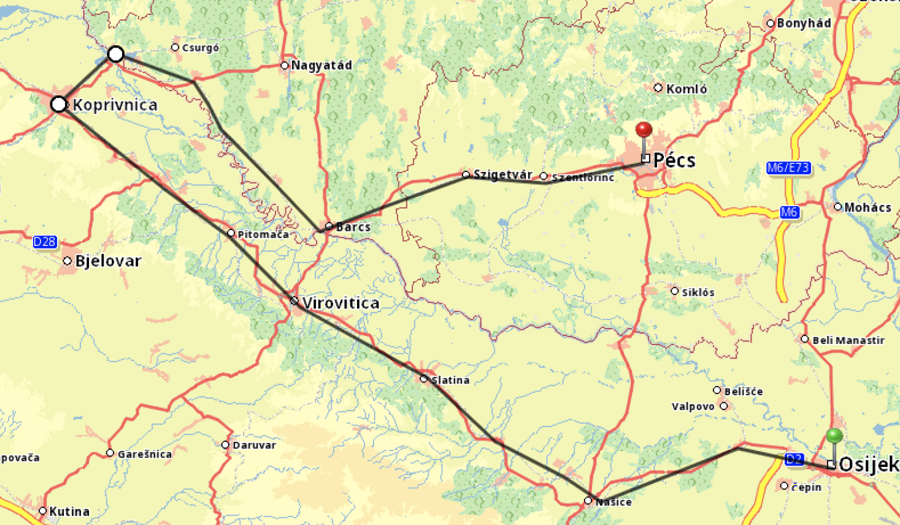
The train journey took an exceptional SIXTEEN hours and 14 minutes, with a 10-hour layover in Koprivnica.
And yet, there is a functioning rail track between the two countries.
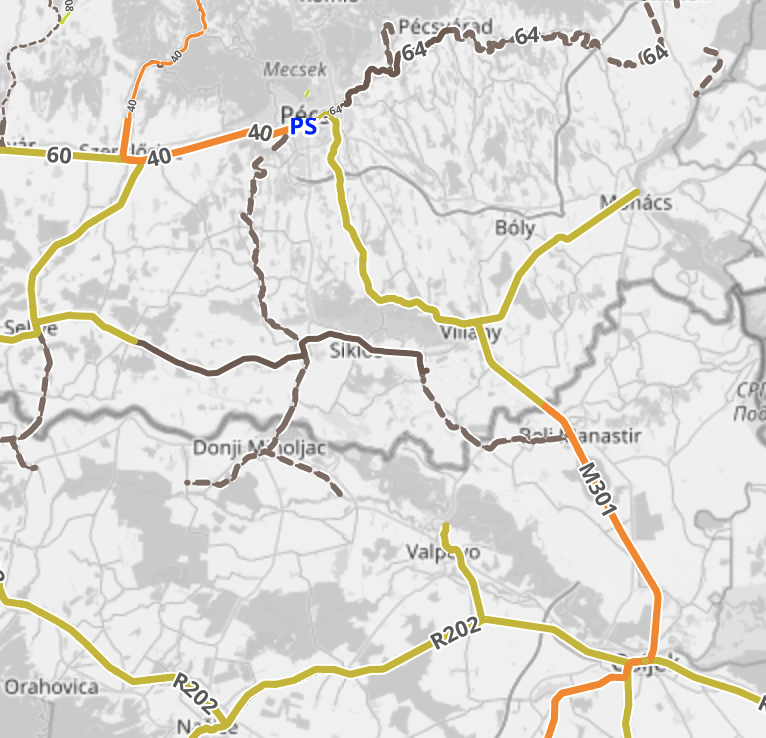
And, on the Bahn.de timetable, there is also a cross-border train to Beli Manistir in Baranja from Pecs.

And not just one, but several a day between Baranja and southern Hungary. Given that there is rail track between Osijek and Beli Manistir, there must be a train, surely, thought Worth?
And indeed there is. Several.
He decided to check the Croatian Railways website, and here is what he found.

A wonderful selection, many of which connected conveniently for onward travel to Hungary. As Worth noted:
There would be a safe connection departing Osijek at 10:11, arriving Beli Manastir 10:41. Depart Beli Manastir at 11:43 and arrive Pécs at 13:07. Trip time: 2 hours 54 minutes (versus 16 hours 54 minutes proposed by DB!) and 1 change (better than the 2 with DB).
So an efficient train route exists but nobody knows about it, so nobody uses it. How is such a thing possible, we wondered.
Worth explained that sites like Bahn.de have the international network but they are reliant on getting data for national timetables from a (from memory) French body which coordinates with national railways to provide that information. If the national timetable is provided, as it is in Hungary, then all local trains are included in the Bahn.de timetable. If, in the case of Croatia, they are not, then they are necessarily excluded, and passengers are left with the only online solution of a day out in Koprivnica.
But here's the thing that floored me.
"But 20 years ago," explained Worth as he sipped his beer, "Croatian national timetables were included and so the information could be found online in the integrated European timetable. Indeed, this was the case until about 5 years ago."
It seems that someone from Croatian Railways stopped sending the information to the French.
So there we go. If you want to have some low-hanging fruit success at improving the efficiency of Croatian railways, it seems that all is needed is to get some chap to export an Excel spreadsheet to the responsible French organisation to add to the European database. And in one email, we could reduce journey times from 16 hours to under three. And THAT would surely place Croatia as the EU champions of improved rail performance.
#CrossBorderRail summary Day 25 https://t.co/dK0kEwhgUY
— Jon Worth (@jonworth) July 11, 2022
I leave the final word to Jon Worth himself, who uploaded his observations by video on Twitter:
And perhaps the final, final word of this quite magnificent poster at Zagreb station, seemingly warning people to be aware of the oncoming speedy train. I can't think of a more fitting symbol of the state of Croatia's railways.

Now will someone please send that email to France, please?
You can follow Jon Worth's EU Cross Border Rail Project here.
Property of the Week: Who Wants a Place in Old Town Hvar?
July 13, 2022 - You have visited the island and fallen in love and are dreaming of a small place. Is there any Hvar property for sale?
As they say in real estate, it is all about three things - location, location, location.
I won't pretend that Hvar Town is the cheapest places in Croatia - it isn't - but it is certainly one of the most beautiful and most exclusive.
Finding property for sale in the old town of Hvar is not all that common, but one has just come on the market from our friends at Trgostan:
This duplex house of 120 m2 located in a quiet street just 70 meters from the waterfront, which consists of a kitchen with dining area, living room, hallway and toilet on the ground floor, and three bedrooms, hallway, bathroom and large balcony on the 1st floor, with the potential to add another floor, facing south-north, close to all amenities, ideal for a holiday home or tourism, rarely on the market.
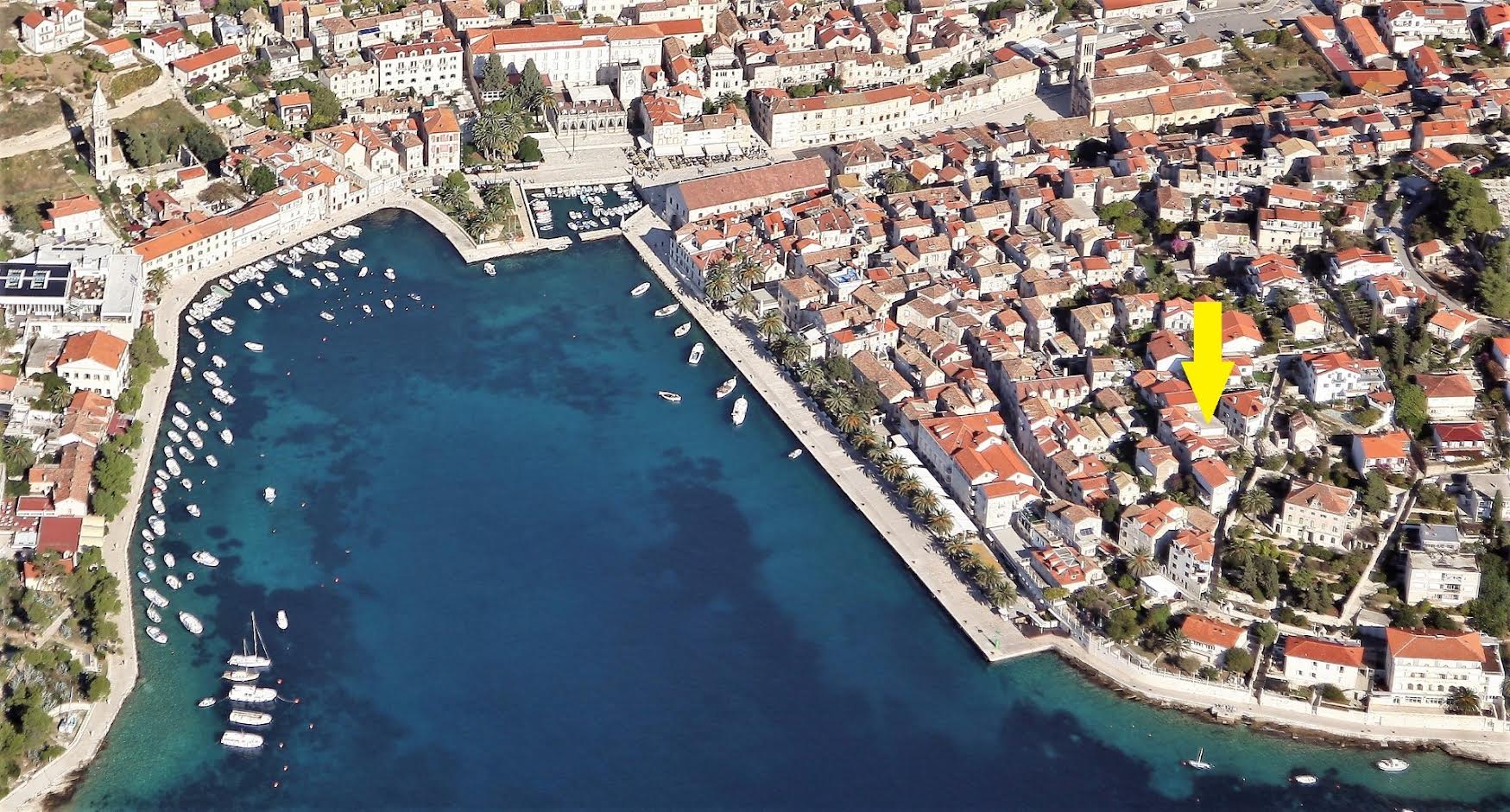
The island of Hvar is one of the most beautiful islands in the world and the sunniest Croatian island, displaying all the traits of the Mediterranean area – gentle climate, beautiful inlets and beaches, crystal-clear sea and vast fields of lavender, olive groves and vineyards. Inhabited since the pre-historic times, the Island of Hvar developed under various influences of Greek, Illyric, Roman, Venetian, Austro-Hungarian and Croatian culture, witnessed by the preserved buildings, fields and customs. The largest sites on the island are the ancient town of Stari Grad (Pharos), Jelsa, Vrboska, Sućuraj and the most attractive destination, Hvar Town.
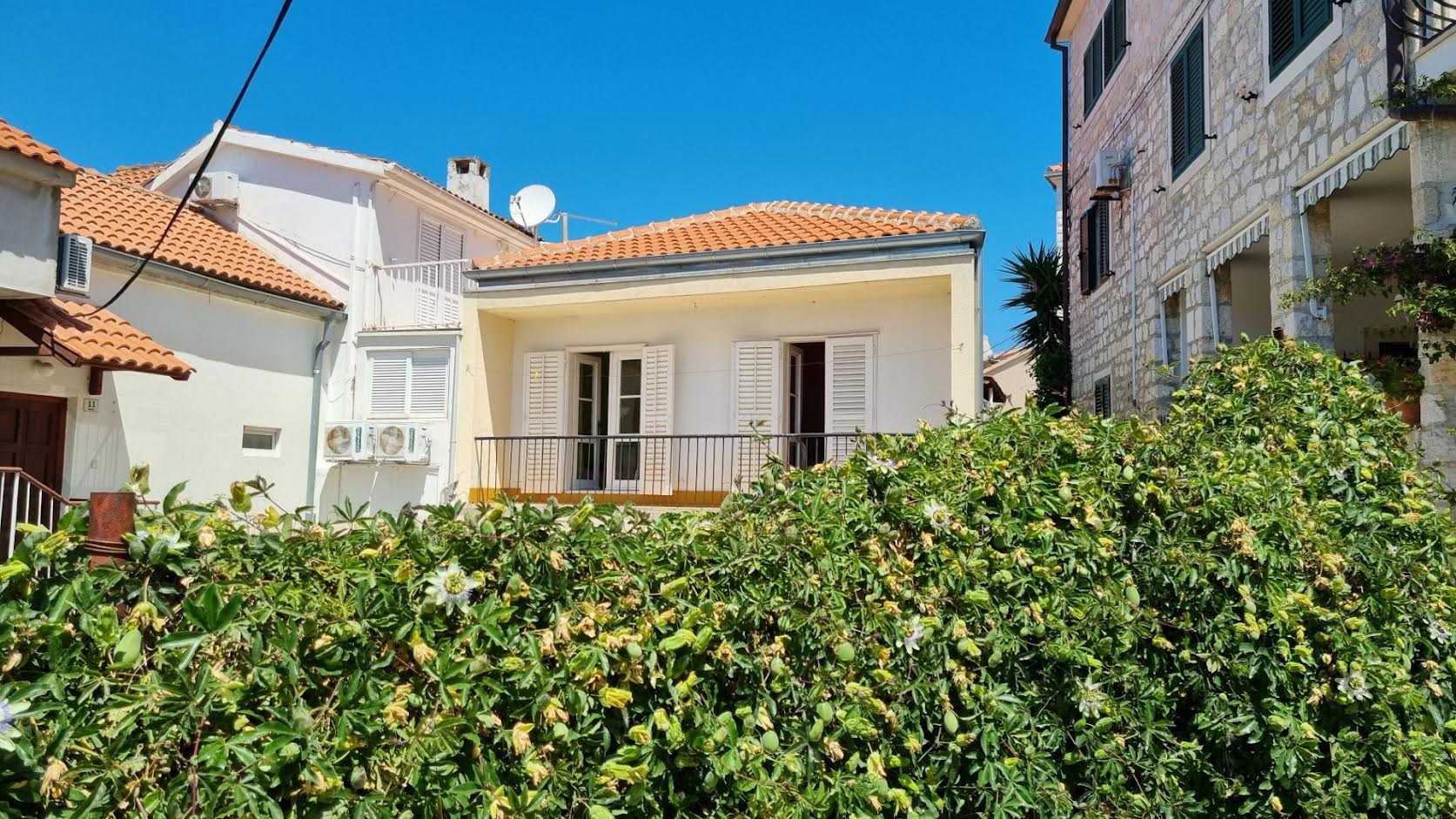
The Town of Hvar is one of the most beautiful and most exclusive tourist resorts not only in Croatia, but in the whole of Europe. The trendy destination is a perfect blend of rich architecture, top-notch culinary delights, modern hotel infrastructure and fantastic natural beauties, allowing for active enjoyment in all the town’s offerings, including the Pakleni Island archipelago, or just simple and pleasurable sipping of your drink on the town strand, enjoying the view of luxury boats moored in the port.
For more photos, information, and to book a viewing, visit the listing on the Trgostan website.
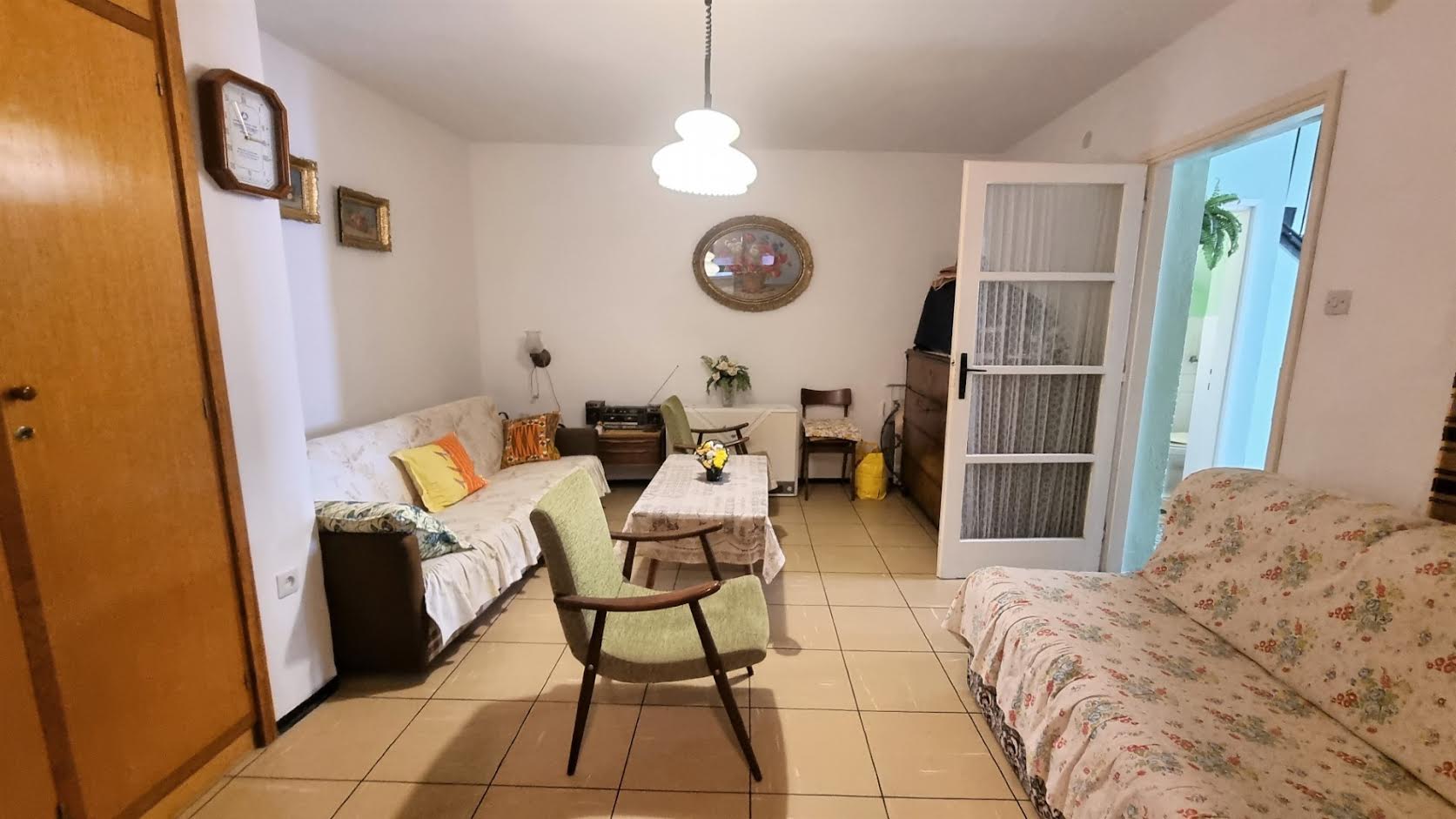
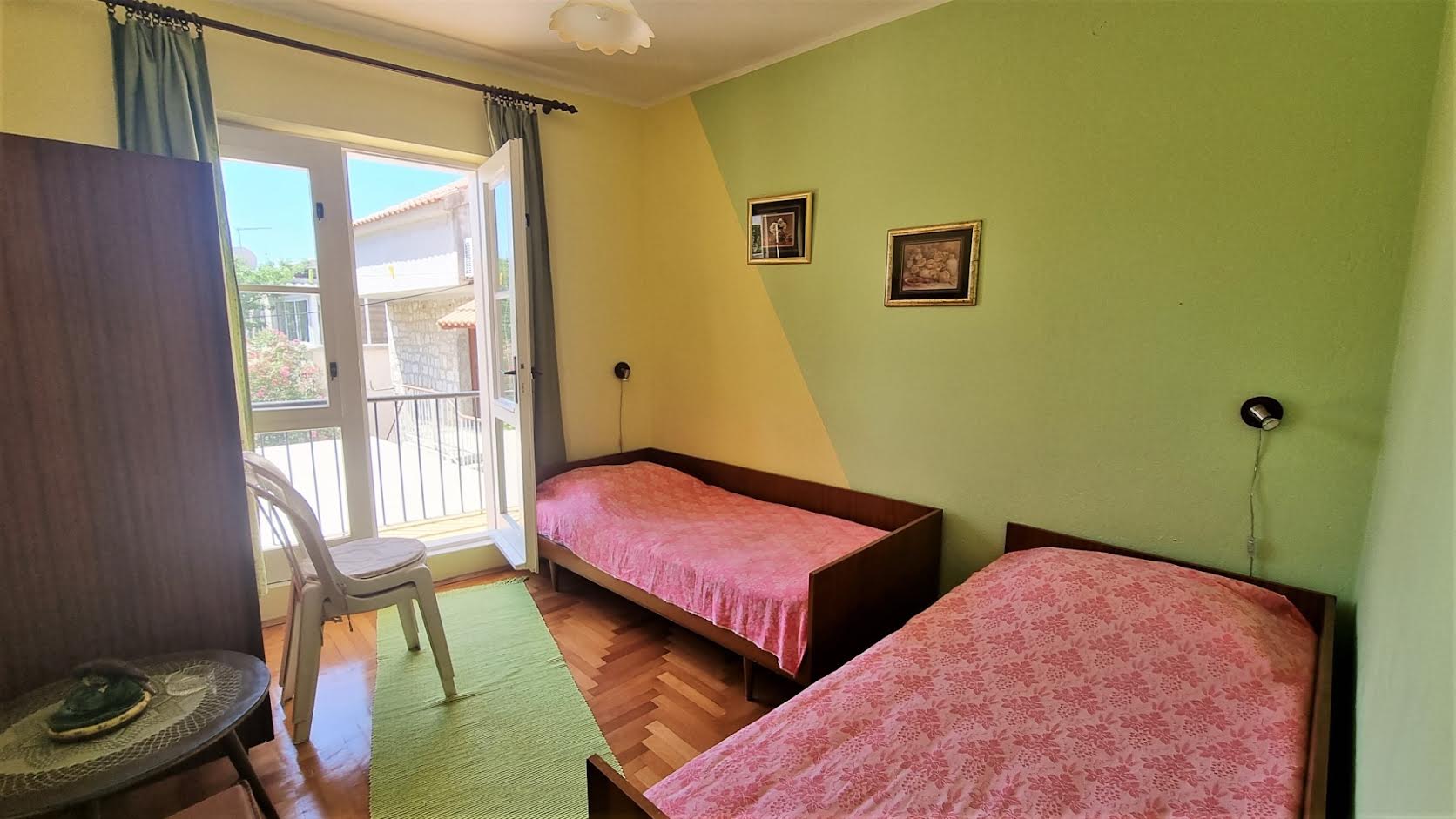

Meet Foreign Students Choosing Croatian Education: Manda Ivkic from Austria
July 13, 2022 - Among the growing number of foreigners relocating to Croatia, international students are increasingly visible. So who are these foreign students choosing Croatia, and why? In the latest in a new series, we get the perspectives of life and study in Croatia through the eyes of its foreign students, continuing with Manda Ivkic from Austria.
Among the many foreign tongues heard around the Croatian capital these days is the growing number of students choosing to do their graduate programmes in Croatia. A safe, affordable EU country, with a rapidly expanding programme of high-quality graduate courses in English, with excellent employment opportunities upon graduation, are just some of the reasons for choosing Croatia. And the quality of that education was highlighted recently, as Algebra University College signed an academic partnership agreement with Goldsmiths, University of London (as reported previously on TCN), thereby allowing Algebra students to study under the approved programmes of one of the 500 best universities in the world according to the World University Ranking.
Despite the growing excellence of English-language graduate and post-graduate education in Croatia, the opportunities are not so well known, and so TCN - in partnership with Algebra University College - has compiled an authoritative guide to what you need to know about studying in this beautiful country. Check out the Total Croatia Study in Croatia guide.
Nothing paints the real picture of studying in a foreign country better than the real experiences of students living the day-to-day reality. In a new series on TCN, we meet some of the international students who have fallen in love with Croatia, many of whom plan to stay and work here if they can find employment. We look at the realities of life, why they chose Croatia, and what advice they have for others contemplating studying in Croatia.
Time to meet Manda Ivkic from Austria who is doing a graduate course in Specialist Graduate Professional Study Programme in Digital Marketing at Algebra University College.
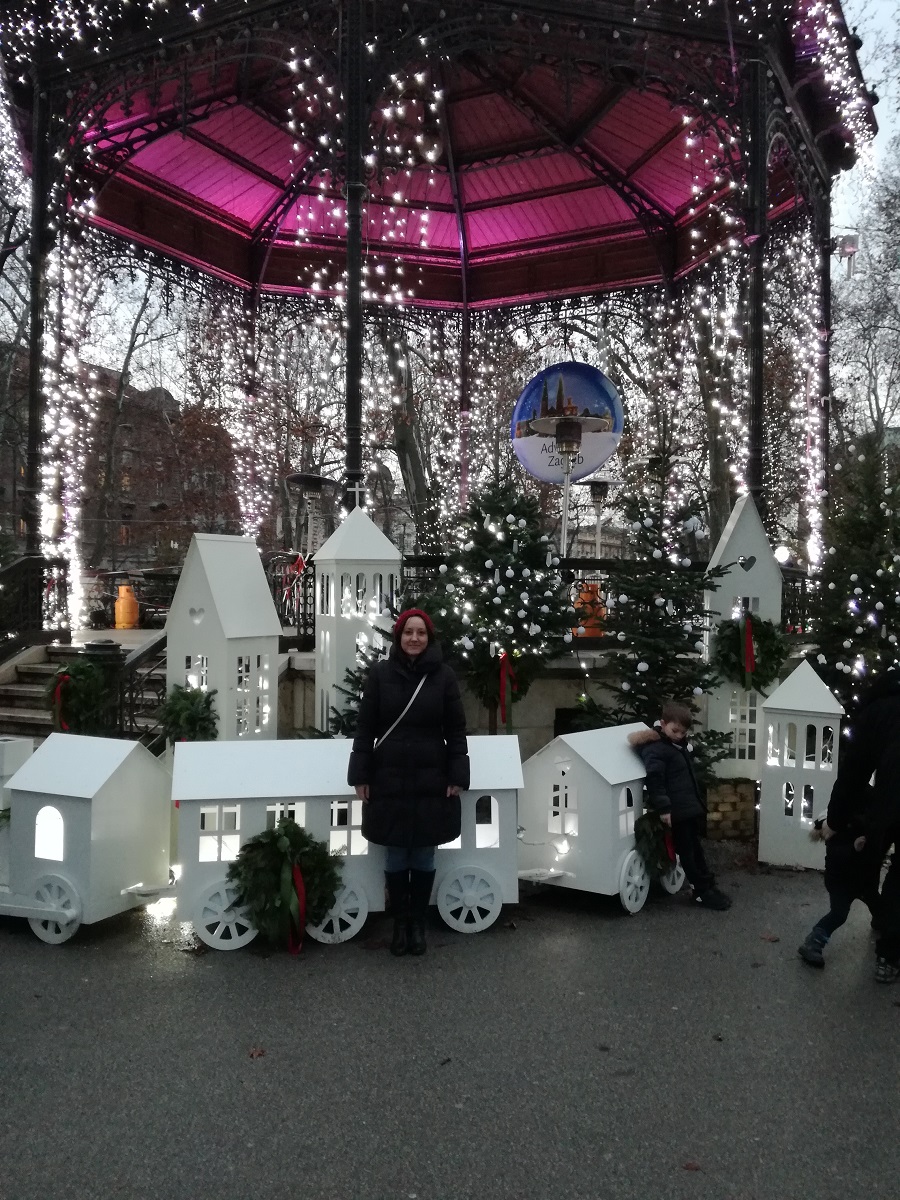
1. You chose to study in Croatia. Tell us what were the main factors in that decision.
I wanted to study Digital Marketing but I wanted to do it in English. I was not able to find a Digital Marketing study program at graduate level in Austria that was 100 % in English. So, I researched other countries’ offerings and found a study program on a student portal offered by Algebra University College. At first, I thought it was a Swiss college but then I realized it is Croatian. I found some articles in Austrian newspapers about the good quality of education in Algebra and the possibility to easily find a job after graduation or even while studying. That was the main driver for my decision. As I always wanted to spend one summer in Croatia, I found it was a great opportunity to also explore Croatia and extend my network.
2. How is the experience so far? Give us some pros and cons.
Every beginning is a bit tough when you move to another country. I think the situation with the pandemic made it more difficult than it would normally be. However, I found it very easy to integrate into university. Croatian students are very open-minded, friendly and willing to help. They helped me a lot to integrate easily in a very short period of time. There is also a WhatsApp group for international students and some local Buddies support these students. That helps us from abroad to get all questions answered by locals and also to meet new people from all over the world. So far, I enjoyed exploring Zagreb and Croatia, its culture and the lifestyle. The traffic in Zagreb is very busy compared to what I was used to and there are quite a few traffic jams. Also, some Croatian drivers are impatient and I had to learn to deal with it... There are also other aspects that are different too, but that is what you should expect when you go abroad – you want to see and experience something different – that is the reason why one travels abroad.
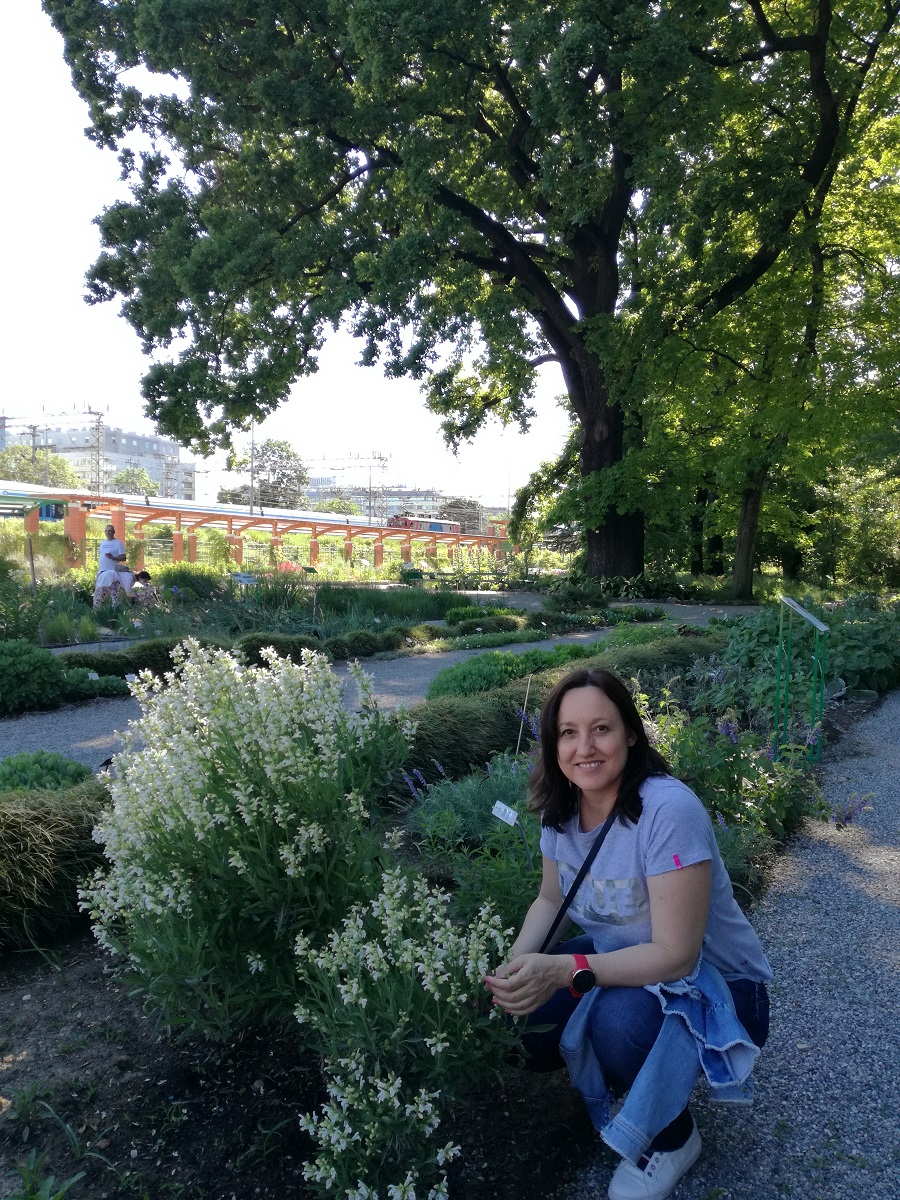
3. How was your perception of studying in Croatia different from the reality? Give us some things that have surprised you about the experience?
I was surprised about the amount of work students have to do on their own besides the labs, such as homework, projects etc. I don’t know if this is with all study programs but I needed some time to get used to that. However, there is something positive about that. Having to work continuously on these tasks helps students to get prepared for the exams. On the other hand, I was very positively surprised about the communication among students and between professors and students, which is open, democratic and supports dialogue and discussion. There is a huge sense of support and team spirit. I like that very much and I feel like being integrated very well and accepted by all students, local and international.
4. How easy was it to do the paperwork to enroll in the study programme? Any suggestions to improve things?
I found it very easy to do the application because everything was clearly stated and the international office was very customer-oriented. One improvement I would suggest is that the students should receive the information about the schedule for courses they take for which they should be present at college when applying. This would be helpful when thinking about job application in advance but also about the accommodation (commuting time, distance between job and college, location of accommodation etc.).
5. Tell us a little about the accommodation and the cost of living.
There are different possibilities from the student dormitory to private accommodation. Zagreb offers accommodation for every budget and you can have low, moderate or high cost accommodation as a student. If you wish to have an apartment with a great location, you will need approx. 500 EUR a month. I know that many students coming with friends share the apartments which makes sense for mates and lower the cost. In Croatia there are some great offers for students like student canteens, student transport passes with reduced prices. Almost every attraction, theater or museum offers student discounts. In my opinion, Croatia is more student-friendly than many other countries. I can recommend everyone to go on the Erasmus program and spend at least one semester abroad.
6. Finding work is a key priority for students, both to help finance the study, but also upon graduation. How hard have you found it to find work, and what are the main obstacles?
Job offers in Zagreb are good, you can find a job very easily as a student. Most of the students work while studying and there is a student center that helps with contracts, payments etc. You just need to register there as a student which required little paperwork. As there are also many companies from EU or overseas, you can even find a job offered by Austrian, German or American companies. I had a full-time job-offer with a German institute and one of my international colleagues found a job at a German company that has an office in Zagreb. There are large numbers of jobs offered for customer care specialists in different languages. Some jobs are even remote which is very convenient.

7. Tell us about the Croatian lifestyle and making friends. How has it been for you?
The Croatian lifestyle is different then what I am used to (Austrian or German). People love to spend time with friends or colleagues at bars, cafés and restaurants. They seem not to be as stressed as Western Europeans and they have a better work-life balance. It is easy to meet people and make friends in Croatia due to its welcoming culture. As an international student, you are more likely to meet students – local and from all over the world - and there are lot of things you can do together. The weather is mainly good in Croatia so it is easy to enjoy the outside activities and visit attractions, coast side or national parks and nightlife, too.
8. Do you plan to (try and) stay in Croatia when your studies finish? Why/not?
I could imagine staying in Croatia after studying for some time or for longer. It will very much depend on the situation at the time when I graduate. The main factor will be the job offerings here or abroad. Croatia offers good possibilities in the IT and digital sector but I think it is too early to think seriously about it actually due to the uncertain post covid and war situation in Europe that will affect the economies and businesses. We will see what the future is holding for us.
9. Three things you have enjoyed most about your experience studying in Croatia?
Meeting new people and making friends from Croatia, getting to know the real Croatian culture and the ability to easily travel to the seaside are three things I most enjoyed about my experience studying in Croatia. The Croatian coast is so beautiful and you can reach it in approx. 2 hours drive from Zagreb.
10. What advice do you have for people who are considering studying in Croatia?
The Mediterranean climate and the food, all the places one can visit, festivals and events one can join make Croatia a great place for studying abroad. There are many national parks around and even a ski area, Sljeme, in Zagreb. The college organizes hiking tours, sports for free and you can also join some sports competitions. Everyone can find an activity that he/ she loves. If you have ever thought about going to Croatia and if you can manage it, just do it! It is worth exploring. Although you might also experience some negative aspects or have few bad days while abroad, missing your loved once or your friends, you will most likely enjoy it much more. You will very soon learn to love the Croatian lifestyle, friendliness and welcomeness. I am very happy that I made the decision to study in Croatia. I don’t want to miss the experience!
Are you an international student on a graduate or post-graduate course in Croatia, who would like to be featured in this series? Contact us on This email address is being protected from spambots. You need JavaScript enabled to view it. Subject Study.
To learn more about the options for studying in Croatia, check out the Total Croatia Study in Croatia guide.
For more information on courses offered by Algebra University College, visit the official website.
Steve Mešić Ludi Releases Fifth Single 'Ljubavna' Dedicated to Wife Tena
July 13, 2022 - Steve Mešić Ludi, a well-known Croatian rapper who lives and works in New York, released his fifth single 'Ljubavna', published by the publishing house D' Knock Production, led by Darko Juranović Knock.
‘Ljubavna’ is released after previously successful singles 'Emigrant', 'Hladan Svijet', 'Nije Bitno', and 'Hijene'. D' Knock once again took care of the production, arrangement, mix and mastering and is also the author of the music while Ludi wrote the lyrics. The video was shot in attractive locations in New York - Central Park, Brooklyn Bridge, and in the apartment of Ludi and his wife Tena Bugarin. Ivan Radavić was video producer, and Danijel Kovačević editor.
"I was without inspiration for a while. I couldn't write anything meaningful without staying true to myself. I drew new inspiration from love and wrote and dedicated rhymes to my Tena, who is my biggest supporter. Where there's love, there's fire - that's what I was guided by when creating this song, which is also the first in which I learned the basics of singing with the help of D'Knock's wife Jelena Juranović Jay, to whom I'm really grateful," - said Steve and added: "It's not easy to teach a rapper to sing, believe me. We rehearsed for days so that I could sing the chorus, and she added more spice to the song with her backing vocals, adding even more sunshine and positivity to it. Thanks also to my wonderful wife Tena, who spent sixteen hours with me on the recording, and fulfilled my wish to be a part of my video".
For more, check out our lifestyle section.
Highly Poisonous Silver-cheeked Toadfish Appears in Croatian Waters Again
July the 13th, 2022 - An extremely poisonous bony fish called the silver-cheeked toadfish (Lagocephalus sceleratus), sometimes also referred to as the Sennin-fugu, has appeared in Croatian waters recently.
As Poslovni Dnevnik writes, a brand new species of fish appears in Croatian waters or in the wider Adriatic Sea seemingly every single week due to temperature changes. A few months ago, a fisherman near the island of Kosar near Pasman caught a poisonous fish, the highly poisonous and very dangerous silver-cheeked toadfish (Lagocephalus sceleratus), writes City magazine.
This is an extremely poisonous and deadly species, which contains the powerful thermostable poison tetrodotoxin in its muscles, liver and skin. Its consumption is prohibited in all European Union (EU) countries, but in Japan it is a gastronomic delicacy known as fugu, which is prepared according to special procedures due to its deadly poison.
It is believed that the thermostable poison this fish contains is several hundred times stronger than cyanide.
What kind of fish this actually is was discussed and further explained on N1 Croatia/Hrvatska, when Dr. Jakov Dulcic, the head of the laboratory for ichthyology and coastal fishing of the Institute of Oceanography and Fisheries in Split, was asked about them.
"It's very widespread in the Indian Ocean, the Western Pacific and in the Red Sea. It is a Lessepsian migrant, which means that it reached the Mediterranean from the Red Sea via the Suez Canal. It's an extremely invasive species that has fully established its populations across the the Mediterranean (especially in its eastern part),'' explained Dr. Jakov Dulcic.
He added that this fish was first seen in Croatian waters close to the island of Jakljan near Dubrovnik back in 2012. Then it was found along the Albanian, Montenegrin and Croatian coasts.
The Institute warned swimmers and those fishing on social media that, if they do come across this deadly fish in Croatian waters, to avoid direct contact if possible, and if that is impossible, to handle it extremely carefully. In addition to the poison, this species has a strong jaw with sharp teeth, and its bite can cause serious injuries.
For more, make sure to check out our dedicated lifestyle section.


